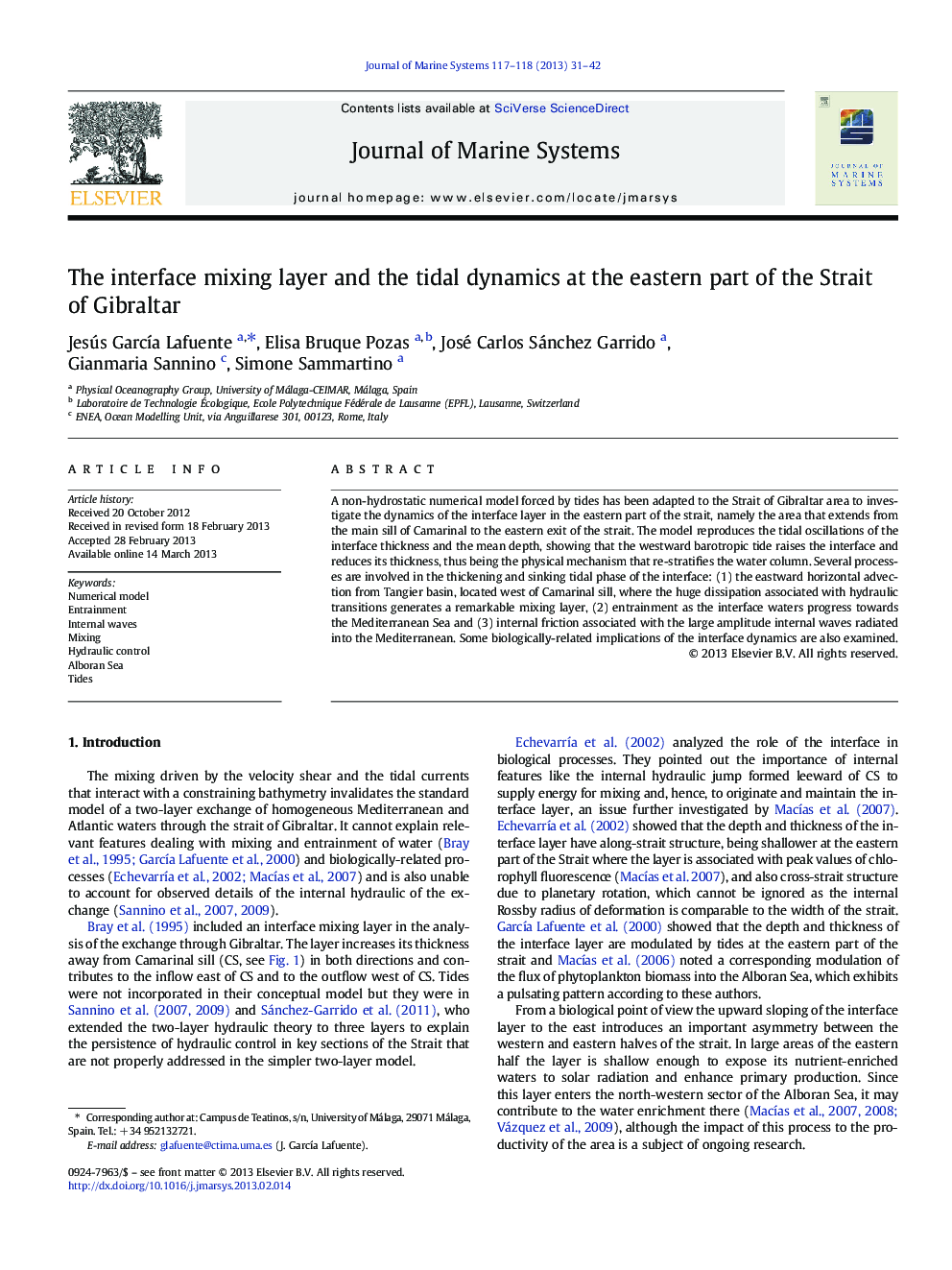| Article ID | Journal | Published Year | Pages | File Type |
|---|---|---|---|---|
| 4548138 | Journal of Marine Systems | 2013 | 12 Pages |
•The tidal dynamics of the interface layer is numerically investigated.•Mixed water produced in Tangier basin is advected into the interface layer.•Entrainment and wave-induced mixing also contribute to the interface layer thickening.•Flood tidal currents are responsible for the re-stratification of the flow.•Nutrient-enriched mixed waters are periodically brought up to the photic zone.
A non-hydrostatic numerical model forced by tides has been adapted to the Strait of Gibraltar area to investigate the dynamics of the interface layer in the eastern part of the strait, namely the area that extends from the main sill of Camarinal to the eastern exit of the strait. The model reproduces the tidal oscillations of the interface thickness and the mean depth, showing that the westward barotropic tide raises the interface and reduces its thickness, thus being the physical mechanism that re-stratifies the water column. Several processes are involved in the thickening and sinking tidal phase of the interface: (1) the eastward horizontal advection from Tangier basin, located west of Camarinal sill, where the huge dissipation associated with hydraulic transitions generates a remarkable mixing layer, (2) entrainment as the interface waters progress towards the Mediterranean Sea and (3) internal friction associated with the large amplitude internal waves radiated into the Mediterranean. Some biologically-related implications of the interface dynamics are also examined.
